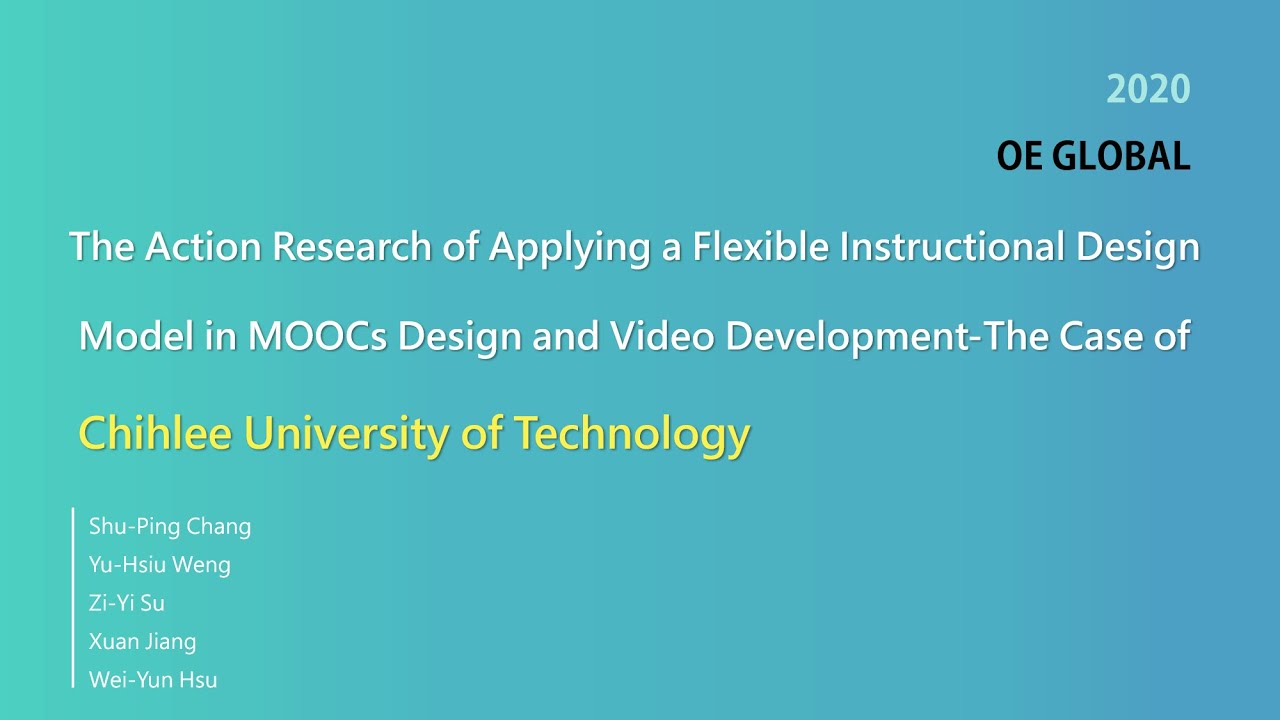Authors: Shu-Ping Chang, Yu-Hsiu Weng, Zi-Yi Su, Xuan Jiang, Wei-Yun Hsu
Institution: Chihlee University of Technology
Country: Taiwan
Topic: Applications of Open Education Practices/Open Pedagogy/Open Education Research
Sector: Higher Education
UNESCO Area of Focus: Sustainable OER
Session Format: Poster
Abstract
In recent years, the universities in various places around the world have promoted Massive Open Online Courses (MOOCs). Global educational institutions are providing learner-centered education in an unprecedented and diversified development model and speed. Since 2014, Taiwan has promoted MOOCs, guided colleges and universities to input administrative and student affairs, established supporting mechanism for MOOCs, and promoted the development of MOOCs to realize universal education. Most Moocs produced via systematic and prudent procedures. William & Diana (2000) deemed that digital teaching design should contain four major parts, namely, the evaluation and analysis of multimedia demands, multimedia teaching design, multimedia teaching development and implementation, and multimedia teaching assessment. Additionally, Hsu and Shih (2003) asserted that the most commonly adopted teaching design models were proposed by Smith & Ragan, Dick & Carey, Lee & Owens et al. In consideration of many models, Chang (2004) summarized and concluded that these models often contained five elements, including analysis, design, development, implementation, and evaluation (abbreviated as ADDIE). Hsu (2003) argued that the five elements were in order. Many detailed tasks could be conducted in parallel. And the steps can be merged or adjusted according to manpower, technologies, and relevant resources. As technologies advance constantly, video has become a major way of teaching material of MOOCs. However, this study paid special attention on how to adopt instructional design method to enhance course quality and development speed . This study was based on flexible ADDIE, and combined the characteristics of the models of Smith & Ragan, Dick & Carey, Hsu (2003) as the basis of procedures of course development and implementation. Based on our findings, the discussion and suggestion of this study can serve as reference in terms of MOOCs.Keywords
Moocs Design, MOOCs Video Development, Instructional Design Model
